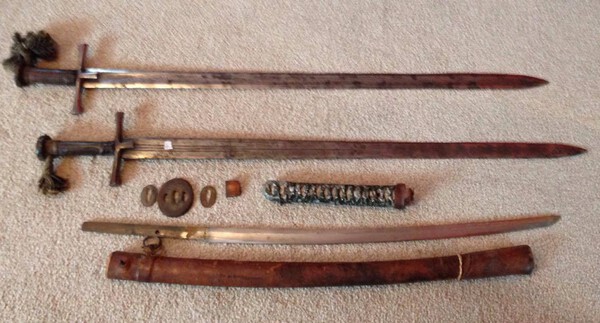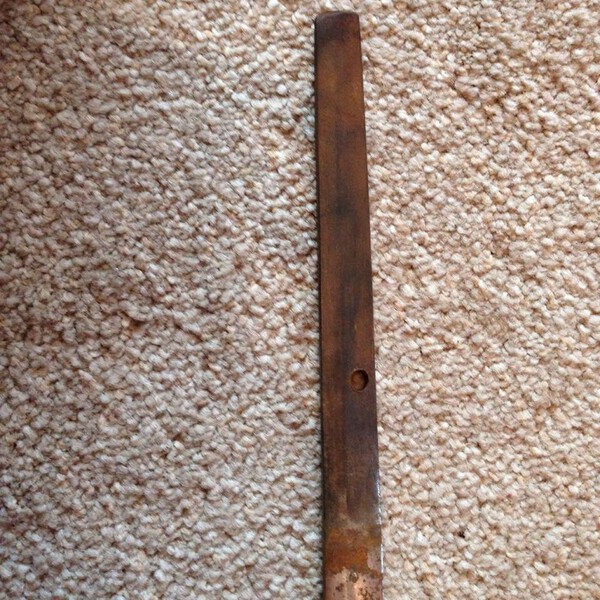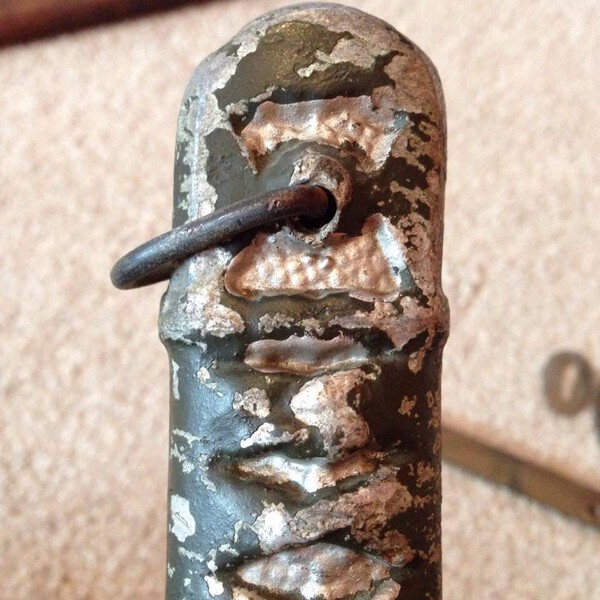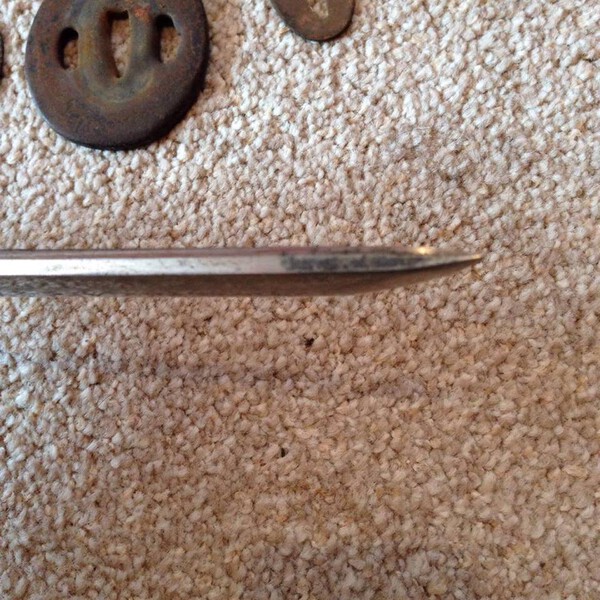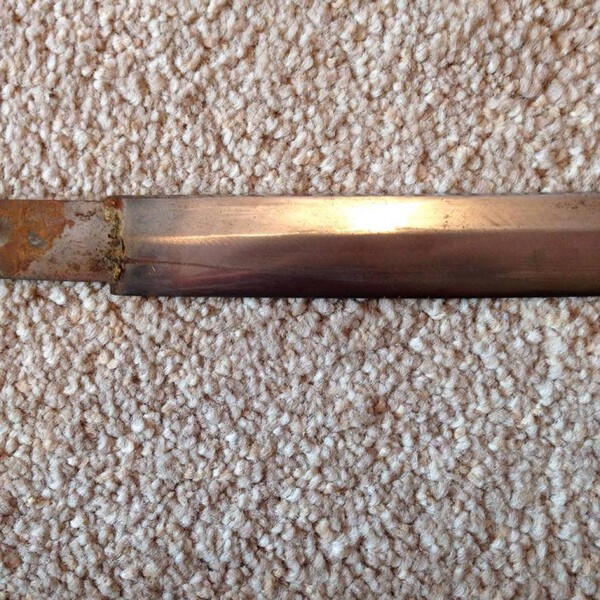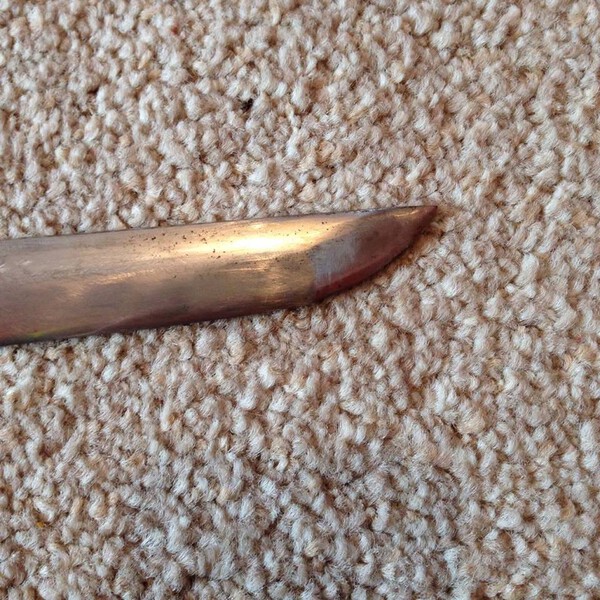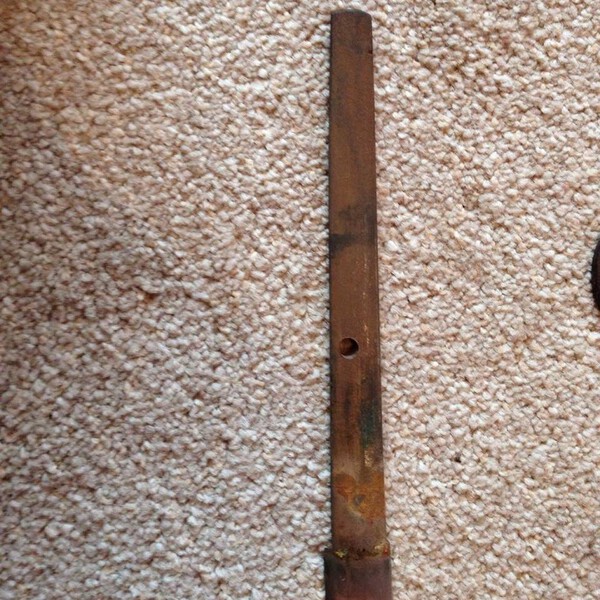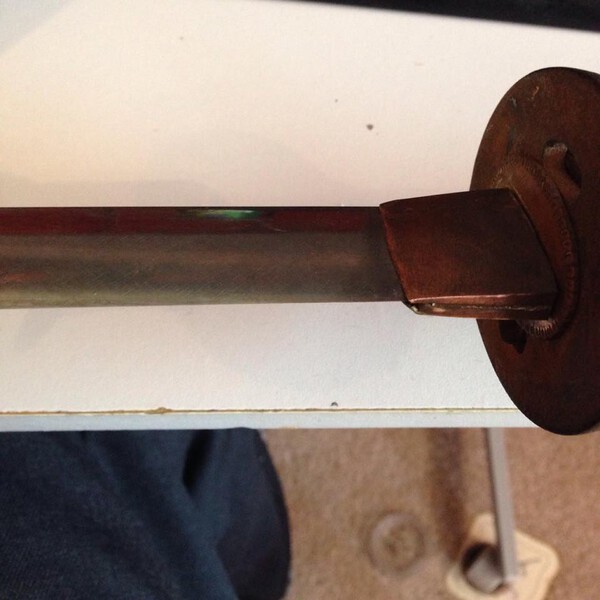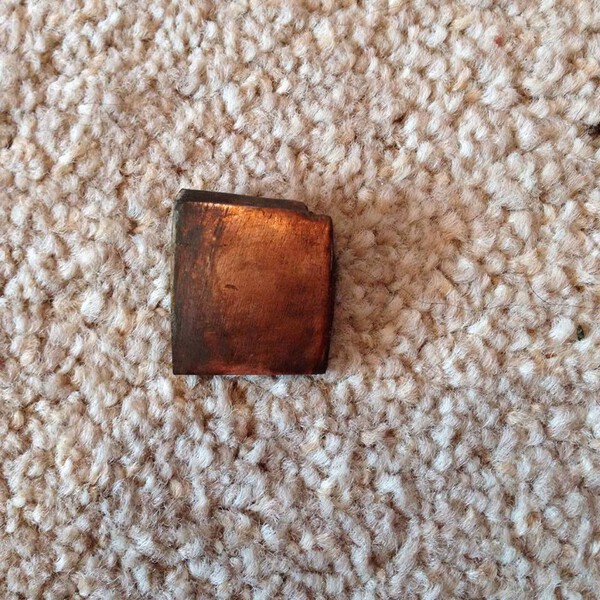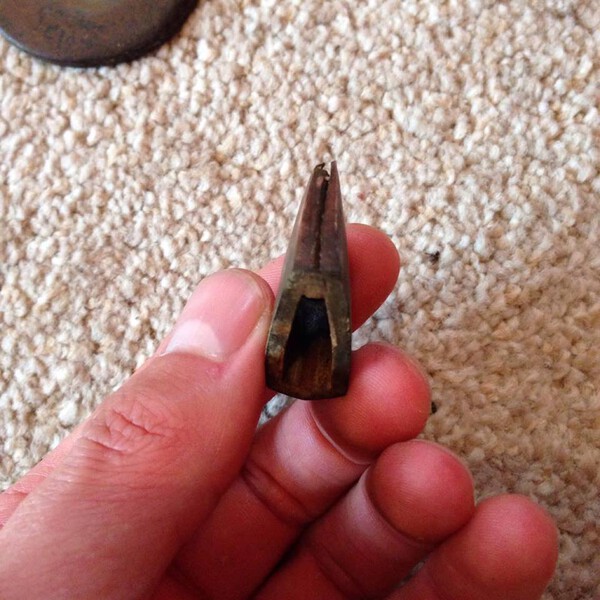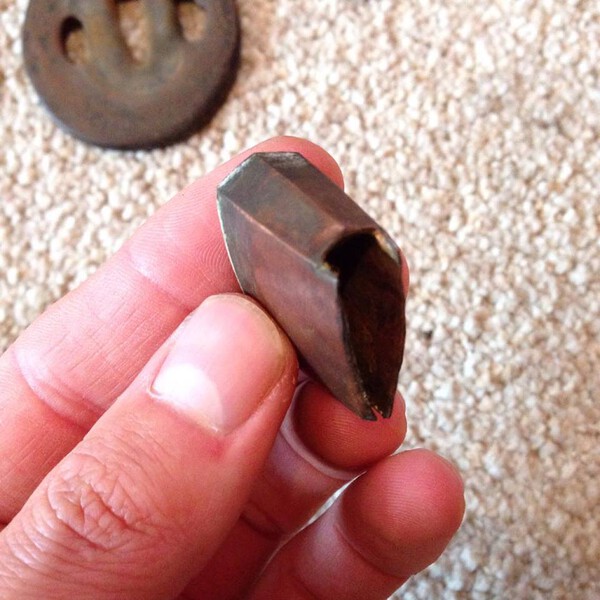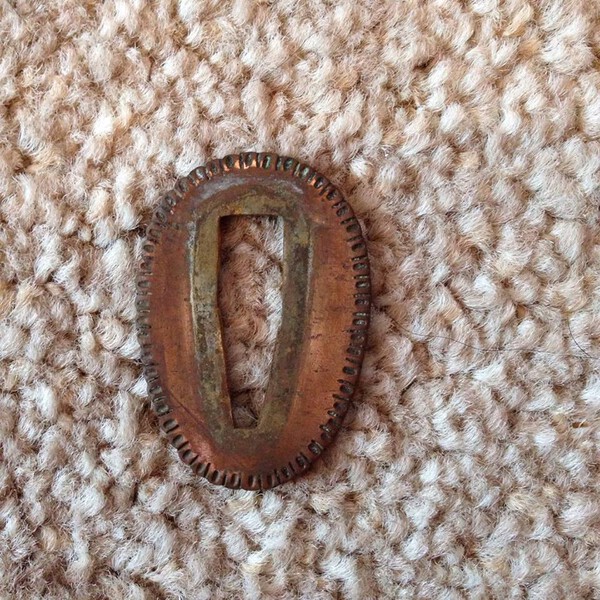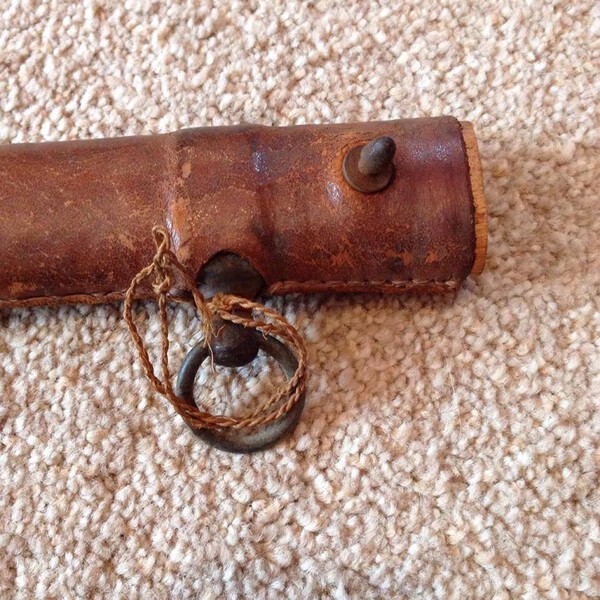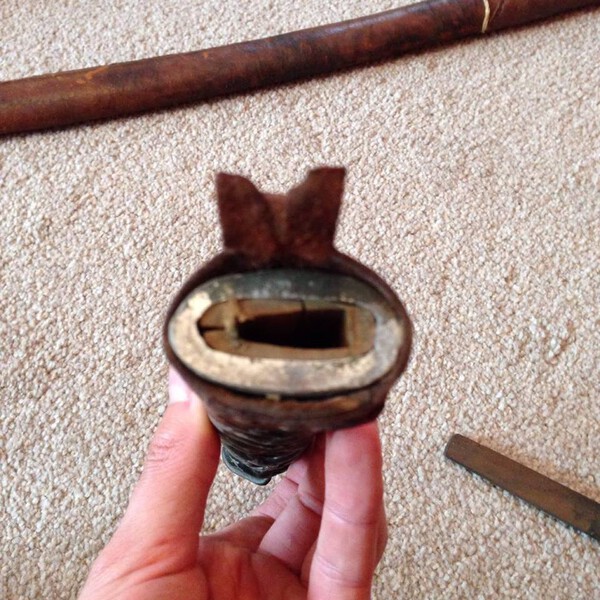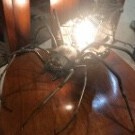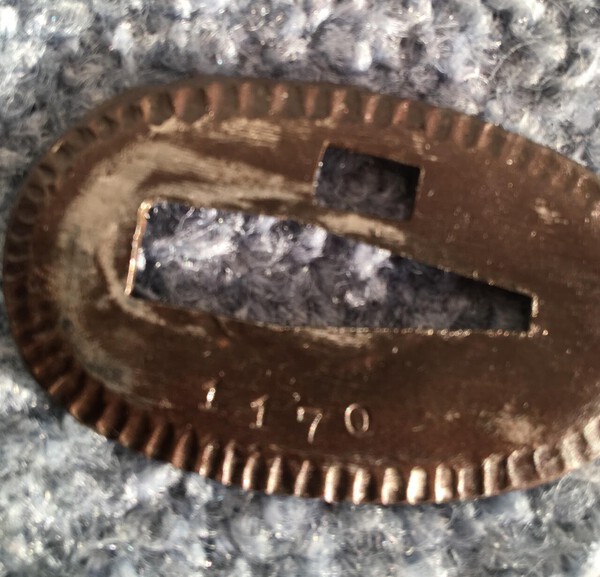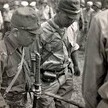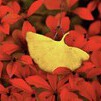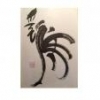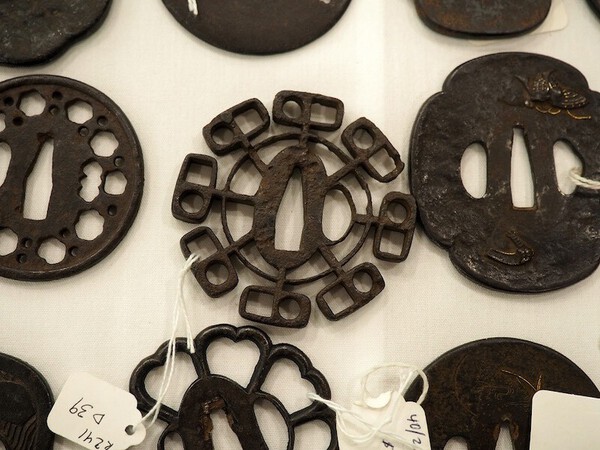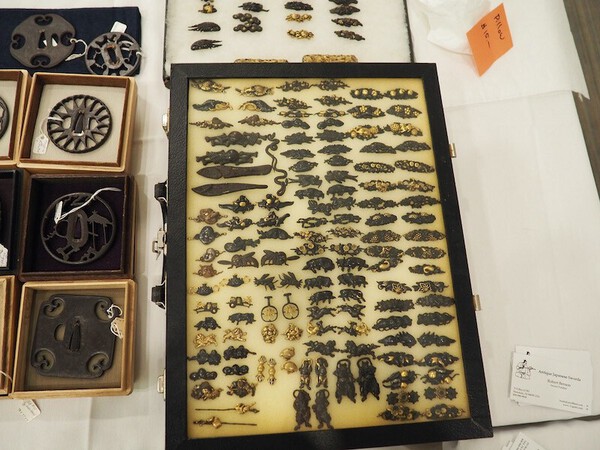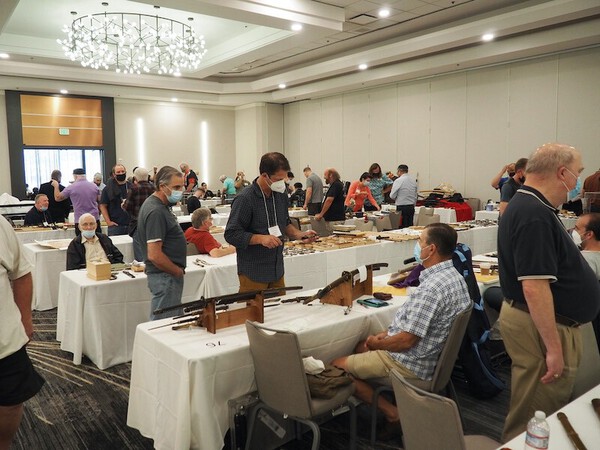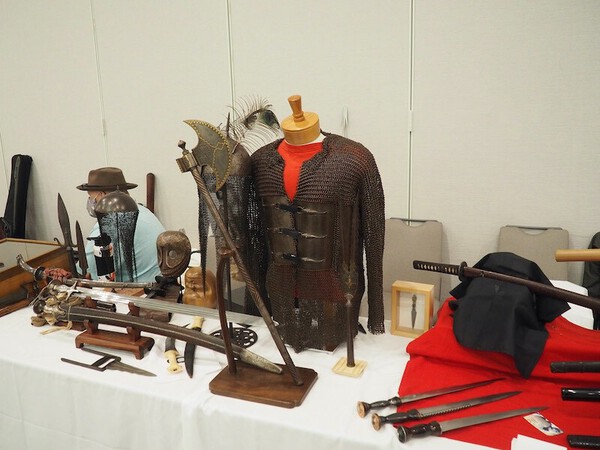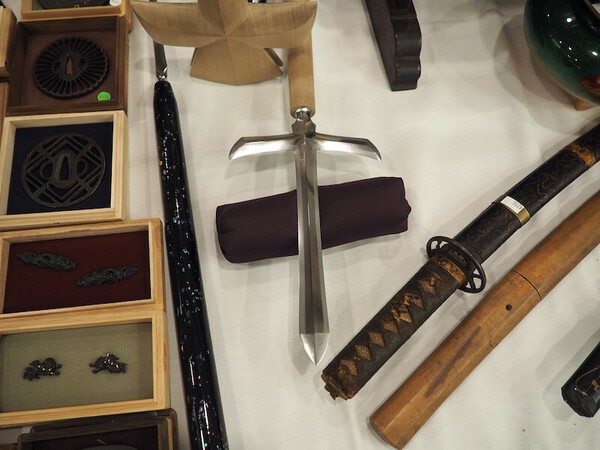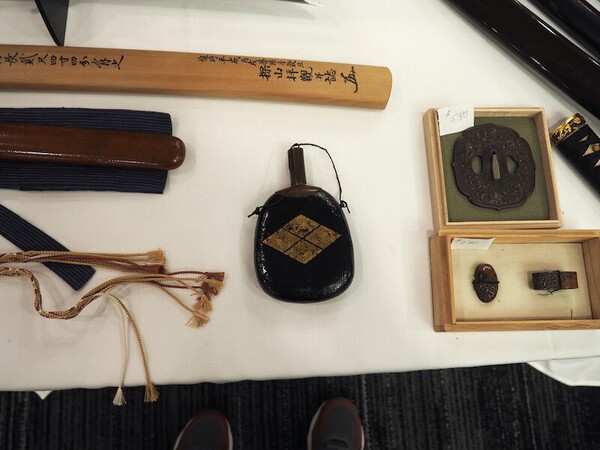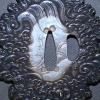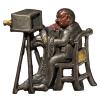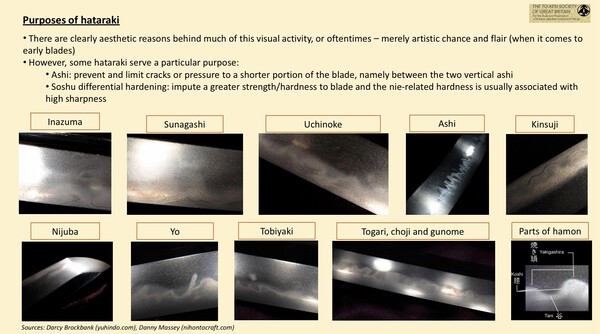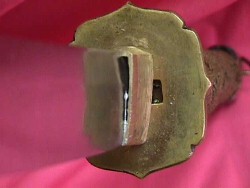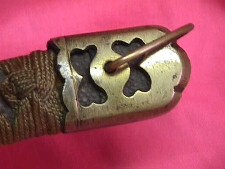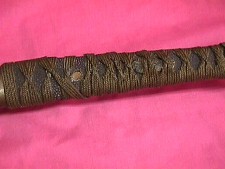Leaderboard
Popular Content
Showing content with the highest reputation on 08/22/2021 in Posts
-
Dear George. To take this back to the original thread if I may, your seller, whom I don't know and as far as I remember have never dealt with, has very magnanimously stated that he will take the sword back so that remains your option but there are some things to think about going forward. It is not my intention to criticise anybody or to stir up anything but here are some thoughts. Major UK auction houses refuse to allow their normal conditions of sale to apply to Japanese swords; they recognise that they don't have the expertise to guarantee what they say. In other words if you buy a sword they have described as Koto and Japanese shinsa ascribes it to Shinto you have no come back. If you turned up and said that a few people on an internet forum had said that it was Shinto I suspect you would be met with polite disbelief. You asked for some opinions and you got them. When I posted earlier I did not come off the fence but offered some thought for study, however I think we are all far too quick to run to, 'it tapers and it's straight it must be Kanbun Shinto'. For what it's worth, which is as little as every other opinion presented here, I think your sword is Koto. You bought the sword from Ebay if I understand the thread correctly. There is a whole heap of advice on this board about not doing that but going for polished and papered blades from known sellers and that has much to recommend it but the lure of discovery is too great and tales of treasures out of the woodwork keep us all going. However this means that you had time to look at the sword, out of polish though it is and in photographs whose quality I don't know. You took a flier and as I suggested I can see why you might. But that's the point, you took a risk. Good for you! A lot of the fun to be had is taking that risk when you think you see something worth pursuing and getting the result you want when it does turn out to be an early Kamakura blade and goes Juyo. Your money, (not a great deal of it but believe me I appreciate how hard that can be to come by sometimes), your risk. The only way you will ever know if this paid off is by sending it for polish and shinsa. Worst case scenario, I am completely off my trolley and you have a papered, suriage Kanbun Shinto sword. If that happens then you will probably not break even if you sell it straight away, or maybe not even if you keep it for thirty years. But that's not how a gamble works is it? What if it does turn out to be Kamakura but with a fatal flaw? Then you've lost everything. Expecting every gamble to pay off is also a completely unreasonable way to enjoy a hobby, a vast number of people seem to enjoy rambling all over a bit of country whacking a very small ball with a metal stick, they pay thousands of dollars/pounds/currency of choice to do so. Very few of them make any money out of it. They spend a ton of money on something they enjoy, they don't anticipate a monetary return. (If my wife is reading this then, don't worry Darling, of course my collection is different and when I die you will be able to sell it for much more than I ever paid for them!) If you go the polish and shinsa route and it turns out poorly then at the very least you have rescued an historical artefact. Is that not something you would enjoy? Whatever happens to my small collection I have had such a great time collecting and learning, sharing with others, and it's been cheaper than golf! Sorry! Ramble over. Of course it's your sword, your deal and your choice. All the best.5 points
-
Hi Gulio and welcome. This is a patch of clustered ara-nie with a tendency towards nie kuzure. These form large crystals of standing-out nie that are discernible easily to the naked eye. What's occurring here is that the hardening process fluctuates between nie and nioi, with unevenness in the expression, density, and size of the nie crystals. This can be due to either materials being unevenly mixed, or to the quenching temperature differential between slightly different between sections of the blade. The ara-nie of smiths such as Shizu Kaneuji is a valuable kantei point, and considered a positive trait and deliberate (i.e. reflecting the smith's intention). Ara-nie has a strong presence in the mino tradition, and later in Shinto (which was inherited from Mino, broadly speaking). As you move away from Kaneuji, Ara-nie is considered more accidental than deliberate. Hotsure appears as fraying threads of fine nie crystals, typically a trait of Yamato-den. Nijuba you'll fine as a parallel repetitions of the nioiguchi, typically on early Bizen tachi and Yamashiro work more generally. Hope this helps, good luck in your study. Don't hesitate should have any questions.3 points
-
HI Mal, Well I opened your articles today and YES, I have read them...I must be getting old...forgot. All the info Geoff requested/suggested is there...great work Mal. Back in the day I had navy swords by Suetsugu Shigemitsu and others...wish I'd kept them...sigh! Regards,3 points
-
I had a blade where a tiny hagiri popped up after polish. 27 3/4” nagasa, really nice activity all through out. I liked it so I kept it. It was Teruhiro/Teruhide whatever that line of Shinto smiths was, but this was definitely a shin Shinto piece if genuine signature. Luis, I don’t recall ever having a blade signed Sa. I know a friend of mine did that he sold at SOS almost a decade ago. If it was me, for the future I always allow for an inspection period regardless of selling it on eBay or elsewhere. On returns, I don’t mind. I’m fortunate that I don’t need the money, this isn’t how I feed my family. Also, I know on these types of things you just need to see them in hand to be sure, and it’s not like they’re buying some $20 gadget of Amazon. i recently sent 3 blades to be polished and a 4th to get an opinion on whether or not worth the restoration that I just had a feeling something was special about it. I got a call when the swords arrived and was asked why I wasn’t polishing the one I sent for him to check out as it looked Rai, so off it went. Had another friend tell me the hamon looked like Rai kunitoshi to him as well. So fingers crossed, we’ll see how it turns out. One of the others was a mumei blade, almost 28” nagasa. One of my friends studied it in hand and was thinking Sekishu Naotsuna. The person that handles the polishing thought it was Shinto. So that one is a total gamble, but it had nice activity so will probably enjoy It anyways. Added some pics.2 points
-
I am not certain any more sicne it has been a while but think I may have bought a blade from btreed3 a while ago that turned out to be a definate Gimei. Since I had misread a Kanji and only noticed uppon arrival that has been absolkutely my bad. SInce the seller did not make any statements on the Mei at all he is not to blame at all. I would not consider a return as I buy according to my knowledge. So sold as is. If it had been an original Sa I would have not shared the gain with the seller either Some while ago I had sold a Bizen blade here on the board. I was not confident about the signature so I did comment on it. The blade then papered to that big name smith. I would have happily taken it back So my 2cents are that one should carefgully study (picturers) and I feel taht restoration blades should be considered to be bought is in general as but for papered and polished blades there are always suprised accross the road that nobody can aware off ahead2 points
-
I can see that on the sellers pictures when looking carefully. I can not comment on this any further. The questiomn is wheter he did the work and wheter he stated all orignal or did not get any mre specific. It is difficukt to make statements on the age of a of a blade in sime cases. As far as btreeds blade goes I would personally think that it is possibly not Koto but can see why a another person (seller) would think it is Koto and would think the seller did not intentd to mispresent it. HEnce I personaly would not have returned it if I had been the buyer. It is very kind that he offers a return and more than to be expected. A very honest seller.2 points
-
I was considering keeping this one, but there are three I like better. So this one goes, too. It appears the blade was shortened, as many of these were, but I don't know what from.2 points
-
2 points
-
Good morning, Allow me to introduce myself. This is my first post, and my first Japanese sword. I have been a collector of military weapons for a number of years, concentrating on battlefield picked up and surrendered items. This sword appears to be an older family blade, re hung for WW2 military service. It came directly from the veterans family and included was the trophy paperwork from 1946. From basic research I believe the blade to be pre WW2 production, and possibly an old family blade. The grip is a very basic aluminium example, which I presume to be late war expedient fitting? The tsuba is iron, and appears to have a fair bit of age to it. Not what I have usually seen on WW2 NCO swords. Presumably it is original to the blade? I apologise for the very crude images, I will take much nicer ones when the sun comes out. The only information I can tell you about the blade is that it is unsigned and sharpened all the way to the collar. I haven't been able to see clear hamon, and certainly do not know what to look for on a more advanced level. The blade appears to have a lot of sharpening marks, presumably from an oil stone? It hasn't been sharpened recently, and I would presume the last time it was sharpened was during WW2...1 point
-
Sorry John I will make sure to limit this moving forward1 point
-
Don't you think you are being excessive with your bumps? Unless you have new photos/other important information or the thread has gone from the first page it is rude to all the other people with listings to be constantly pushing yours to the top. Please show some restraint and consideration for the section, you are not the only person trying to sell here.1 point
-
Mike, that looks indeed very much like KUNIHIRO! If you do not have specialized books, the NIHONTO INFO (upmost line) > Research - TOSOGU MEI has lots of the most used KANJI for you!1 point
-
Just curious how many collectors out there got stuck with a blade that had hagire not seen in photos nor disclosed and spent thousands on it. It happened to me….1 point
-
Hi Bruce, looking at my 1945 mumei MANTETSU, with mune stamp 1170, in MRS mounts, the seppa are also stamped also 1170. Although stained (no rust, no pits), the HAMON is still visible. So it is an interesting animal, being mumei with correct file marks, a very late mune stamp, matching stamp on seppa, hamon and MRS mounts. Bruce, from the mune stamp, do you think it is one of the very last made? Given they probably had no time to cut a mei?1 point
-
Great info and great resources - thanks again guys. For all of us Kai Gunto fans, this is awesome! P.S. I have two of my Type 97's undergoing Koshirae restoration, currently - Tsuka re-wraps, specifically. One is with David McDonald in Montana, the other with Randy Black (my local guy here in the Phoenix, AZ. area). I'll be posting photos when I get my swords back in the weeks ahead. Note: Randy just completed a saya repair for one of my Toyokawa arsenal Kai Guntos - he did a great job (replaced the Kuchigane and the Ishizuke, and applied lacquer to some areas that needed it). Happy collecting!1 point
-
1 point
-
I thought that you would have a better knowledge about these creatures Dale-thanks for that. As for your coming face to face with a huge King Cobra, I'm glad we don't see their sorts here in Australia. We have enough of our own problem ssssssssserpents. Roger j1 point
-
I was in the neighborhood so I stopped by to look at it again. Having checked Dawson’s in between, it’s definitely an Army sword. That said, the wear on the blade was a lot worse even than my photos showed, so I passed. I’m learning a good rule: there will always be another sword.1 point
-
Thank you all for your help on this one. I come to a conclusion that it is Kanbun which many of you already said. There are many atypical features on the blade which made it tough. I am returning the blade as it is not worth restoration. Thank you Bazza, Alex, Juan and the rest including seller Bteed3 whom is an honest upstanding seller on eBay1 point
-
I apply oil with a piece of facial tissue (paper). I remove oil 1st with another piece of tissue, to get the most of it, and then with microfiber. Grey1 point
-
This is a great thread! I have a Kai-gunto made by Inaba and haven't done my homework well enough, so I appreciate the kickstarter, @Kolekt-To!1 point
-
I was wondering who had this great looking Kunihiro for sale? I have my guess who it might be, and I am just curious as it is way out of my league.1 point
-
1 point
-
@Kolekt-To, are you familiar with Mal Cox's 2 articles on Navy smiths? They are in the HERE and HERE1 point
-
1 point
-
Dear George. I don't think you should be embarrassed about your inability to tell the period of this blade, after all we have guesses ranging from n early tachi through Kanbun Shinto. (I might have missed it but I don't think anyone has suggested Shinshinto revival yet!) As it's out of polish and you can't see any of the indicators of hamon or boshi that makes the job worse. Bazza raised some interesting points about the slightly unnatural shape to the nakago which are worth looking into. The process of suriage is sometimes done very well and sometimes less so. The mune line on this sword does seem to dip toward the ha, don't you think? Making assumptions about the original sugata based on what now remains of the nakago is tricky. Was the nakago shape altered when suriage was carried out? If not then you would expect to see a nakago of pretty much consistent width over it's length and the proportions of the hira ji and shinogi ji remaining the same. The fact that the habaki fits simply means that it was made for the sword after surige, we have no way of telling how much after. Again, Bazza draws attention to the nagasa and suggests that the original length is worth factoring in to your deliberations. Kanbun Shinto swords are typically around 70cms. I have to disagree with Alex regarding the fumbari, ironically I was going to link to a page which defines it only to find that it is the same page that he linked to regarding the kissaki form. Just scroll down a bit. Fumbari is a specific narrowing just above the machi, not an overall tapering of the blade, as such it disappears when suriage is performed. You have taken a gamble with this one and I can see why you were tempted. The only degree of certainty you are going to get now is polish and shinsa. Looking forward to seeing how this one turns out. All the best.1 point
-
George, Bruce, Geoff, there are pics and some discussion p. 30, of Inaba / Matsubara in Naval Swordsmiths #2 in NMB Downloads. As well as some comments on Kaigun Jumei Tosho.1 point
-
Hi Geoff, I am like Bruce, I have seen various smiths noted as being Kaigun Jumei Tosho over the years but have never seen a list (or started one). Here is the one you mention as INABA Kaneyoshi mentioned in Slough p.73 as (Matsubara) Kaneyoshi Aichi Pref. IM yen). He signed INABA but as Slough says, his real name is MATSUBARA (Toko Taikan p.142, ygr bro. of Nakata Kanehide, Seki RJT 2 m yen)...wonder if he is the often seen "smith" signing INABA on many Navy/Toyokawa stainless steel blades that we see? Looking forward to the "Geoff List" aren't we Bruce? Regards,1 point
-
Hi Bruce, Yes 78 on munw. These are just from a list I noted down over the years...all nos on tang mune. No sorry, didn't keep any pics, just made note as they were Osaka/Hyogo/Kyoto area smiths/mountings/numbers. Regards, Geo.1 point
-
1 point
-
Hello, For me UBU is key in your case. I'd like to hear what others have to say But I don't think a plugged hole affects the value of a Shinto blade. Cheers John1 point
-
1 point
-
The NY Token Kai is alive and well and remains the country’s oldest sword club. We could put on quite the exhibition! Do come visit. Our next meeting will be in September.1 point
-
1 point
-
I am btreed3 on eBay. I started this at $1 and thought it was koto but I’m more of a gendai collector so I could easily be wrong. I’ve been purging my collecting the past 12 months and focusing on stuff I want to restore. I have 5 blades in Japan at the moment and this was in the queue but had plenty more in front of it as well. I have a no questions asked return policy if you decide you don’t want to take the risk of polishing or whatever other reason you may decide.1 point
-
Brought in by Eric Molinier - claimed it was a much abused Shinshinto blade purposely made to look old... -t1 point
-
1 point
-
1 point
-
I looked really quickly in the mei book Sekso xlated - I 'think' the kao looks like the first's... I agree with Curran - it doesn't really make me go "ooh" either, but to each their own or if you're collecting mei... best, rkg (Richard George)1 point
-
Without looking up the kao, which generation? If first, then a fair price maybe. I've never particularly liked this design, and i am not impressed by the carving. There is another up by the nidai or later gen that is listed at a dealer's site for less.1 point
-
1 point
-
Anyway , back to the work in hand - Item No. 90 Iron Tsuba in kakugata shape 7.12 cm x 7.00 cm x 0.46 cm Raimon ? Sukashi signed indistinctly Kofu ju Masatomo + kao Simple almost austere design , competently handled . Can Haynes or Wakayama throw any light on to which school / generation this Masatomo belongs to ? Purchased from Japan 9 years ago.1 point
-
It depends on which Ichimonji school and when it was made. I had a Yoshioka Ichimonji which I have used for lectures at our ToKen Society. It had everything: sunagashi, kinsuji, yo and tobiyaki. Even konie, which was specifically mentioned in the Juyo paper. Soshu could be very intense in its sunagashi and kinsuji hataraki, much more than Ichimonji. If you want a lot of hataraki in the hamon, I suggest Ko-Bizen, Hoki, good Fukuoka Ichimonji, Soshu, Soden (eg Chogi, Kencho). Other schools are more subtle and you need a well trained eye to see them and know what you are seeing: Awataguchi, Rai, ko-Aoe. But they are there (usually ko-ashi, small yo). In the images below, the photos illustrating yo, tobiyaki, choji/togari, gunome are from the same Yoshioka. The images with inazuma , sunagashi and uchinoke are from the same Moriie.1 point
-
I'll throw in something tangential to common prospectives just for the sake of it. Nihonto is 80% hada; most of what forms hamon is just the hada that was heat treated. Yet shinto essentially all done in just one hada type and there is also sort of one dominant hamon type, we can call it gunome in nie. As a result, the difference between Kotetsu and Shinkai is miniscule compared to Samonji versus Norishige. If you like shinto, its fine, I probably do, but it does not have much if anything that goes beyond its typical "boundaries". Shinshinto can reach the level of early Nambokucho, but the average pieces tend to look forceful and glassy-plasticky. So when it comes to the best pieces, you can take shinshinto and it will be brighter and all elements tend to be very crisp and sharp, or you can go early koto and the same elements will be a bit tired, but they also be much more subtle. The early koto changes a lot depending on the angle of light/view, shinshinto tends to have certain optimal viewing angles where you can see most of the things the blade has to offer. There is this extra level of depth in good koto, and its also a very natural effect, it just what hada does, versus in shinshinto its often clear the smiths really spend a lot of effort trying to get this particular element. So when it comes to my personal favorite swords I have 2 which are shinshinto, 2 koto, and maybe 1 shinto. Kirill R.1 point
-
Some nuggets: Late muromachi, Seki methods spread and dominate during Shinto times, leading to loss of school-level variations. Brief Momoyama effort to resurect the old methods, fades quickly. Some of it lives on in Hizen in a parallel universe. Shinto peace times reinforce the non-utilitarian aspect of swords, craft is driven by fades and fashions which are disconnected from function. Centralized Tamahagane production leads to loss of regional specificity in iron Reduction in demand for swords during Shinto times leads smashes the right tail of the distribution of geniuses which would have turned grand-masters. Shinshinto Masahide revival starts from scratch after observations that swords are no longer functional. Two generation, destruction test on Naotane swords reveal that the Masahide school wasn't successful in returning functionality. Mozart Kyomaro manages to reproduce some of the beauty of old Koto but then dies young and full of debt. Sword ban strangulates the craft even further... Amongst all these, I think the most underrated is probably 5.1 point
-
The Met has some nice blades on display. On Manhattan, as well, there is the Manhattan Arts and Antiques Center with the Akasaka Collection. Beautiful tosugu and swords, as well as armor and other old Japanese art. On the first floor, if he still is there, is an excellent speaking Japanese expat who sells woodblocks and other swords of varying quality. But has very good prices!1 point
-
Hello all, Joshua introduced me to your forum and I thought I would post the sword being discussed on Gunboards here as well. Great debate as to whether it is a souvenir fake or perhaps manufactured in occupied territories. I know very very little about these but it looks too good and someone went to a lot of effort to make it if it is simple a souvenir piece. for example the markings stampings on the tang and blade. So what is the opinion here? I am posting just some basic pics (to not waste bandwidth) t, if anyone wants more just let me know!!! Again here is the link to the post being discussed:http://forums.gunboards.com/showthread.php?473825-2nd-sword-what-is-it&p=4150513#post4150513 On the blade:1 point
-
There is this sword.. its supposedly Japanese, either super late war, foreign war time made, or a fake and this guy is wrong.. either way have a look...http://quanonline.com/military/military_reference/Japanese/sword8.php I did find this thread on the same sword, the the consensis is there Manchurian made for Japanese troops in China..http://www.warrelics.eu/forum/Japanese-militaria/ww2-sword-305490-2/1 point
-
Since the first of July Germany had changed the rules for book sendings from outside Europe. I recieved a book today from Australia and musst paid 19% vAT + Posting 6 EUR. The vAT includes the book price + sending costs. I phoned with the custom office on Frankfurt Aiport and they explained me that the german government had changed the rules for importing books from outside europe because the german book publisher had make an complaint on the finance minister paying vAT on their books. All gets more and more expensive0 points
-
-1 points













